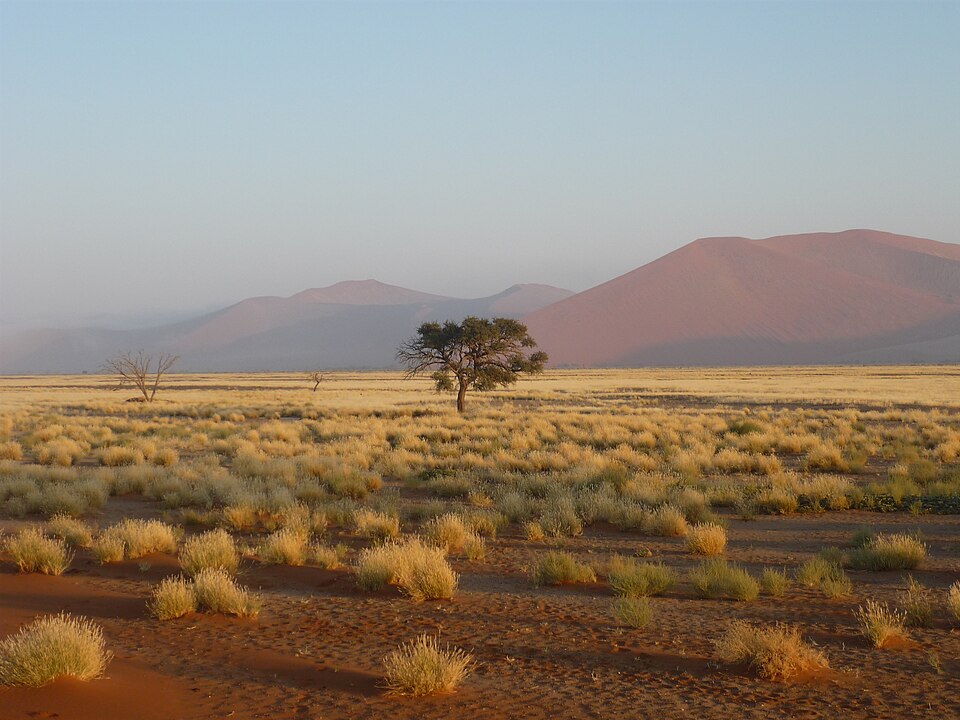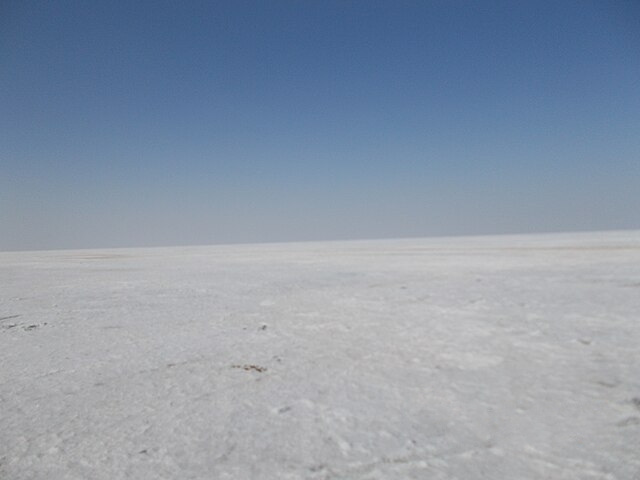
Timelines 10
Man and his Senses 10
Man and his Inventions 10
Geography 10
Fauna 10
Timelines 10
Man and his Senses 10
Man and his Inventions 10
Geography 10
Fauna 10

When you think of deserts, Europe may not come to mind at the first instance, but tucked away in South Moravia, the Bzenec Sand Dunes, nicknamed the “Moravian Sahara,” offer a surprising glimpse of desert-like terrain cradled in a European landscape. Thousands of kilometers away in India, the Great Rann of Kutch spreads across Gujarat’s plains, a vast salt desert steeped in both wildlife and human stories. Though thousands of kilometers apart, these two landscapes share a vital truth: deserts, whether icy or sun-scorched, are far more than barren wastelands—they are fragile ecosystems brimming with life, culture, and purpose.
Váté Písky — The Windblown Sands of South Moravia
Nestled between Rohatec-Kolonie and Bzenec-Přívoz in the South Moravian region, Váté Písky stretches over approximately 94.6 hectares as a protected natural region since 1990. Shaped by windblown forces during the Ice Age, these dunes once escaped their riverbank origins to become a shifting expanse of sand up to 30 m thick in places.
At first glance, the landscape evokes images of desert plains, yet this striking open terrain is hugged by belts of pine planted to halt creeping sands and protect nearby fields. Between the dunes and the forest, a subtle gradient unfolds—shrubs, grasses, rare steppe species, mosses, lichens, insects, birds, and even reptiles find refuge in these small habitats.
To walk across Váté Písky is to appreciate nature’s quietly resilient craft. On a warm summer’s day—when temperatures reach around 30 °C—the open sands radiate heat, while patches of shade beneath pines offer relief. One might spot a lizard darting among the moss, or hear the skittish rustle of grasses.
Hot Tip: Bring sturdy shoes for this uneven terrain, and consider timing your visit in late spring or early summer to be rewarded with wildflowers or emerging wildlife across the dunes.
Why Deserts, Even Small Ones, Matter Globally
Though deserts occupy roughly 20% of Earth's surface—and we often associate them with heat, dryness, or unforgiving landscapes—they are anything but lifeless. Deserts uniquely support biodiversity and offer essential ecosystem benefits such as carbon sequestration, soil formation, and genetic diversity.
Even modest ecosystems like Váté Písky help preserve rare flora and fauna not found elsewhere in Central Europe. Their sandy base and dry microclimate make them a microcosm of adaptation and resilience—a reminder of the broader value deserts hold, however modest their scale.
India’s Great Rann of Kutch — Salt, Wildlife, and Human Tenacity
Shifting our gaze to the Indian subcontinent, the Great Rann of Kutch unfolds as a striking contrast—an expansive seasonal salt marsh that transitions from impassable floods to shimmering white flats.
Once part of the Arabian Sea, geological uplift gradually cut it off, leaving behind a vast mudflat and clay plain stretching across ~26,000 km² of Gujarat and parts of Pakistan. During the monsoon—typically June through September—the marsh floods to a depth of half a metre, before drying into an endless white expanse.
Despite this seasonal harshness, the Rann supports flourishing biodiversity. Elevated “bets” (islets two to three metres above flood level) provide refuge for wildlife—hares and the elusive Indian wild ass move between patches of sand scrub and shrubs. The region shelters about 50 species of mammals, including Indian wild ass, nilgai, blackbuck, and predators like wolves and desert foxes. Over 200 bird species migrate or breed here, while flamingos find temporary sanctuary on this salty sea turned desert.
Conservation efforts are formidable: around 76% of this ecoregion now lies within protected areas—including the Kutch Desert Wildlife Sanctuary (7,506 km², declared in 1986) and the Indian Wild Ass Sanctuary (4,954 km² since 1973).
Salt Farmers of the Rann: Culture Carved from White Sands
Yet this landscape is not an untouched wilderness. For centuries, the Agariya salt farmers have lived on the Rann’s edge, harnessing its challenges into sustenance. Each monsoon, they wait— once water recedes in October, they build embankments, dig wells, and flood fields for salt to crystallize naturally under the relentless sun.
Their work is relentless: daytime heat can soar to 40 °C, while nights can plunge to near freezing—and they endure this six to seven months a year in makeshift housing at the salt fields' edge. Though they produce up to 76% of India’s inland salt, many face poverty, illness, and minimal infrastructure. Their deeply rooted relationship with the land is an essential stitch in the desert’s living fabric.
Two Deserts, One Vital Lesson
What binds Váté Písky and the Great Rann of Kutch, beyond sand or salt, is ecosystem fragility and cultural coexistence. In Moravia, small dunes harbor rare species adapted to a niche environment. In Kutch, a vast salt flat supports migratory birds, endangered mammals, and generations of salt-harvesting communities.
Both landscapes command respect:
Conserve the uncommon: every dune, shrub, or salt crystal matters.
Celebrate resilience: from European lizards basking on dunes to Indian salt farmers setting embankments at dawn.
Appreciate deserts as ecosystems—dynamic, evolving, sometimes harsh, and always purposeful.
Best Time to Visit Each “Desert”
| Location | Best Visiting Window | Why |
|---|---|---|
| Váté Písky (Moravia) | Late spring to mid-summer (May–July) | Warm, dry weather showcases dune scenery and wildlife. Avoids winter cold and deep spring mud. |
| Great Rann of Kutch (India) | Post-monsoon dry season (October–February) | Salt plains are dry and navigable; wildlife visible, and salt harvest operations—and local communities—at their most active. |
Whether you walk across Czech Republic’s windswept dunes or the boundless white plains of Gujarat, you’ll see a land shaped by forces both gentle and extreme—ecosystems that thrive on adaptation, human traditions etched into salt and sand, and reminders that no landscape is too small—or too large—to not matter.
Sources:
https://tinyurl.com/54wvb4yt
https://tinyurl.com/2uzrun6p
https://tinyurl.com/bdedrv5r
https://tinyurl.com/4ceft5jp
https://tinyurl.com/ymcpjdth
https://tinyurl.com/48rj7hsa
https://tinyurl.com/dfzy2jwx
https://tinyurl.com/9z8m5k9w